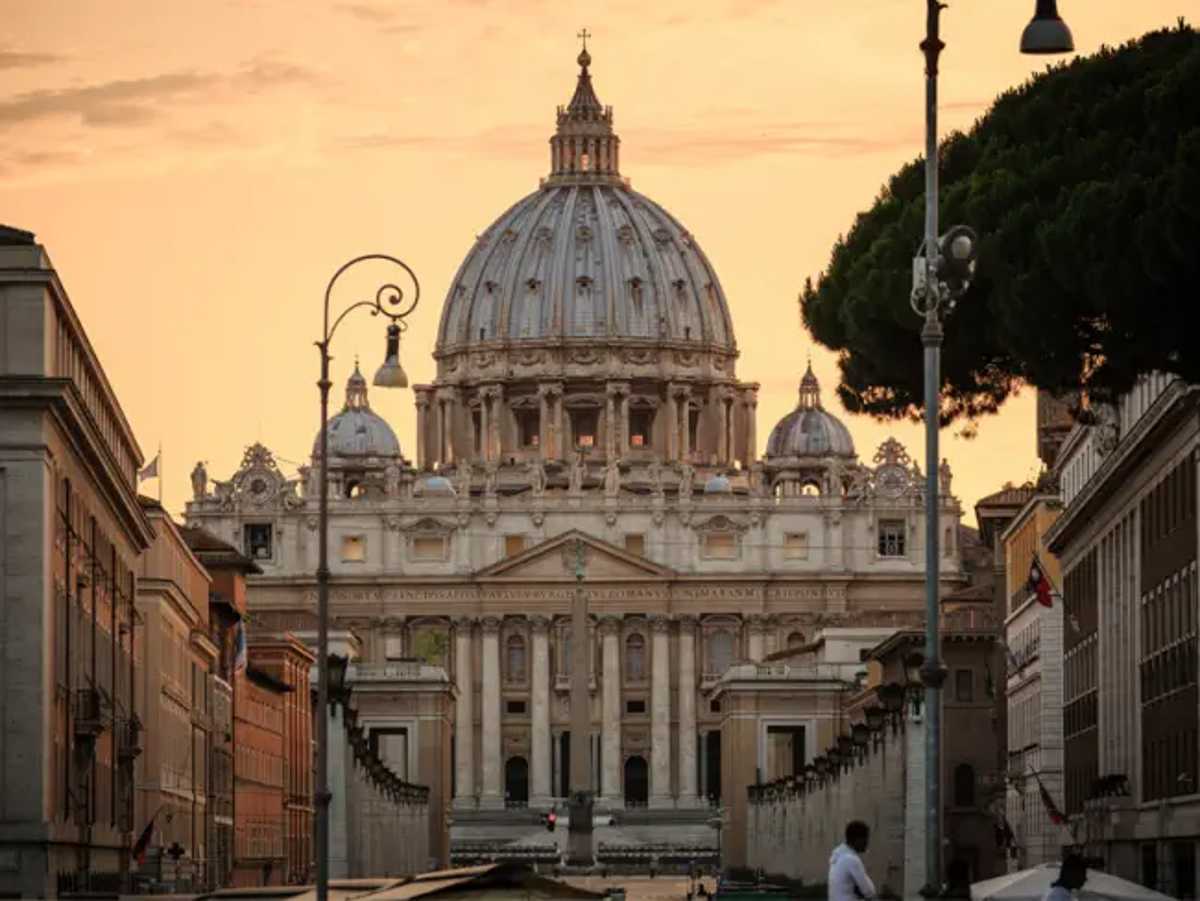
Jorge Mario Bergoglio may just be the final man to claim the papacy before the utter destruction of Rome—at least according to St. Malachy’s Prophecy of the Popes.
St. Malachy was an Irish bishop in the 12th century. The first native-born Irishman to be canonized, he is known in the Roman Catholic Church for his work as a healer, a miracle worker, and as a reformer of the Church in Ireland.
But what he is most known for today is prophecy. St. Malachy was summoned to Rome in 1139 by Pope Innocent II, and while there, he experienced a vision of future popes, which he then recorded as a series of short phrases. This transcript was then placed into the Vatican Secret Archives, where it lay until 1590.
First published in 1595 by Arnold de Wyon, a Benedictine monk, Malachy’s prophecy consists of 112 short Latin descriptions of future popes. Each of these descriptions identifies one outstanding trait for each of these future popes, beginning with Pope Celestine II, who was elected in 1130. This list stretches all the way from the time of St. Malachy to the present, describing, among many others, Pope John Paul II, Benedict XVI, and finally, Pope Francis.
In many ways, these descriptions were uncannily accurate, and so have led to hundreds of years of speculation that this prophecy might just be real, but the real draw of the Prophecy of the Popes is the cataclysm predicted at the end—and the idea that the current pope may be the last before that disaster occurs.
The final of the 112 Latin entries of the prophecy reads as follows.
“In the final persecution of the Holy Roman Church, there will sit Peter the Roman, who will pasture his sheep in many tribulations, and when these things are finished, the city of seven hills [Rome] will be destroyed, and the dreadful judge will judge his people. The End.”
The destruction of Rome. With the safety of the Vatican, itself, being threatened, many are now paying close attention to this 12th century foretelling.
But with the increased scrutiny, holes are beginning to form in the story of St. Malachy’s vision, which many scholars consider an interesting story at best, and at worst, an elaborate hoax.
It is suspect that Malachy’s manuscript was not found until the 16th century—just before a papal conclave. And even more suspicious is the silence of Saint Bernard of Clairvaux, a contemporary biographer of Malachy who closely followed and recorded the Bishop’s life—he makes no mention of these prophecies at all.
Spanish scholar Benito Jerónimo Feijóo y Montenegro, in 1739, wrote that the prophecies were extremely accurate up until their date of publication in 1595, with the accuracy dropping off sharply in the years after. This could mean that Wyon actually created the manuscript rather than finding it, especially considering that the portion of the prophecy written before 1595 closely resembles a 1557 history of the popes by Onofrio Panvinio.
But despite this criticism, links have still been made between Malachy’s alleged prophetic entries and the succeeding 112 popes. For example, Malachy’s description of Jon XXII, who held the papacy from 1316 to 1334, is "de sutore osseo,” which means “from the bony shoemaker.” This particular pope was, indeed, the son of a shoemaker, and held the family name of “Ossa,” meaning bone. In another close match, Malachy used the term "lilium et rosa" to describe Urban VII, whose family crest was composed of roses and lilies.
Other such links, just as strong, abound, calling into question the doubts surrounding the prophecy attributed to St. Malachy.
Most recently, the resignation of Pope Benedict was predicted through the study of Malachy’s manuscript by Tom Horn and Cris Putnam, authors of “Petrus Romanus: The Final Pope is Here.” These two writers provide a rebuttal to the charge that manipulation of the manuscript invalidates it—they believe the prophecy to be true, but that the entries prior to 1595 were rewritten for political gain. Thus, they consider all subsequent entries to remain valid.
Today, Pope Francis is thought to be the ominous “Peter the Roman”—the final pope who will complete the fulfillment of the prophecy of St. Malachy. The connection, however, is shaky at best—proponents of the prophecy claim that St. Francis of Assisi, from whom Pope Francis drew his papal name, had a father whose first name was Pietro, which translates to Peter.
But does this mean that Rome is doomed? Is the Vatican in danger? With the current state of world events—wars, political turmoil, civil unrest, and backlash against organized religion—such an event seems possible, at the very least.
But we may not yet be at the very end. Like any document, the Prophecy of the Popes bears interpretation, and there lies the possibility of unmentioned popes between the next-to-last of the 112 entries and the final entry. In Wyon’s publication of the prophecies, the sentence “In the final persecution of the Holy Roman Church, there will sit…” resides on its own separate paragraph before the conclusion of the prophecy, leaving room for the possibility of any number of unnamed popes taking power before “Peter the Roman”.
The mention of the “tribulations” and “persecution” occurring at the end of Malachy’s prophecy can be interpreted in a sinister way—that “Peter the Roman,” the final pope, may be the Antichrist or False Prophet of Revelation 19:20, which could mean that the Prophecy of the Popes predicts not only the end of Rome, but the Biblical apocalypse.
Whatever you might think of St. Malachy’s Prophecy of the Popes, there is an abundance of evidence just waiting to be sifted through if you’re interested. At the very least, you might find yourself on a journey through some fascinating historical documents and some entertaining theories.
At most, though, you may just stumble upon the truth of a 900-year-old prophecy concerning the end of the world. Because of this, the Prophecy of the Popes is well-worth looking into.

